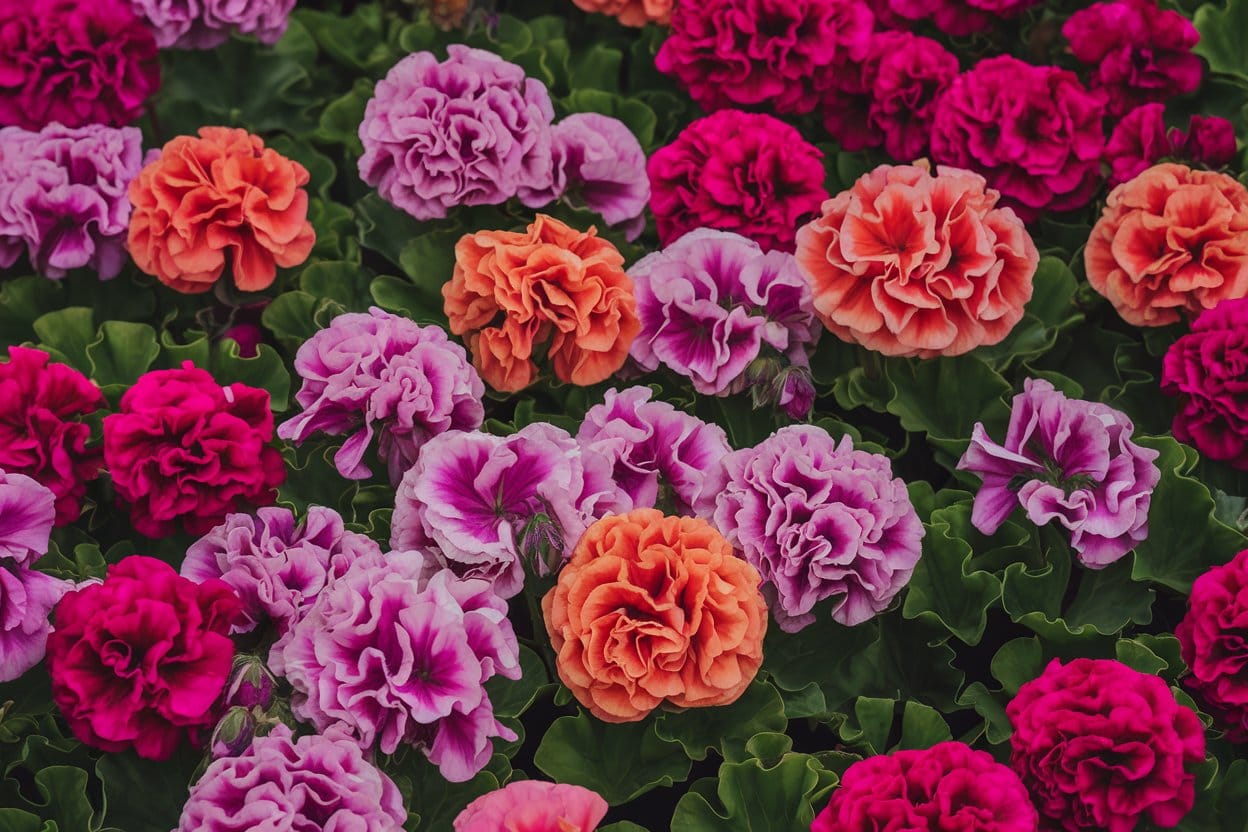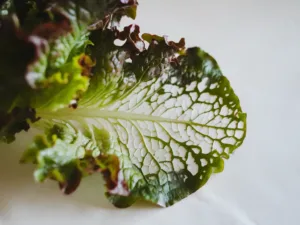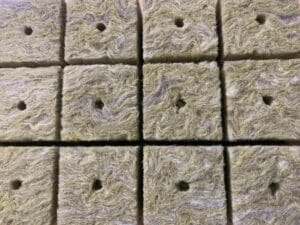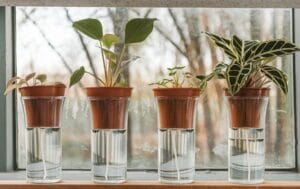Geraniums, or pelargoniums, are not only classic companions for balconies and gardens, but they also bring forth a true floral splendor in hydroponics. These colorful plants are not only decorative but also useful: they attract pollinators, create a lively ambiance, and are even suitable for cutting into floral arrangements. With the right care, you can successfully cultivate geraniums in a hydroponic system—with significantly less effort than traditional soil cultivation.
In this article, you’ll learn everything you need to know to make geraniums bloom in hydroponics. From selecting the right varieties to choosing the right system, and from care to harvest—we’ll guide you step by step on how to turn your geraniums into a real eye-catcher.
The Best Geranium Varieties for Hydroponics
Geraniums come in numerous varieties that differ in growth form, flower color, and flower size. For hydroponic cultivation, particularly robust and bloom-friendly varieties are suitable, as they are well adapted to the constant nutrient supply and water availability in hydroponic systems.
Here are some of the best varieties you should try in your hydroponic garden:
Trailing Geraniums (Pelargonium peltatum)
- Ideal for hanging systems or as a decorative frame for balcony boxes.
- Growth height: Up to 90 cm long shoots.
- Flower colors: Red, Pink, White.
- Advantages: Long-lasting blooms, particularly resistant to drought (in case the system fails).
Upright Geraniums (Pelargonium zonale)
- Perfect for NFT systems and classic planting containers.
- Growth height: 30-60 cm.
- Flower colors: White, Pink, Red, Violet.
- Advantages: Compact growth, ideal for tighter spaces.
Scented Geraniums (Pelargonium graveolens)
- Particularly useful for attracting pollinators.
- Growth height: 40-60 cm.
- Flower colors: Usually small and inconspicuous, but leaves are fragrant with scents like rose, lemon, or mint.
- Advantages: Attract insects like bees and butterflies, ideal for nature-friendly gardens.
The Ideal Hydroponic System for Blooming Geraniums
Geraniums thrive in various hydroponic systems, but some are particularly well-suited. The right system depends on your available space and growth goals. For geraniums, the NFT system (Nutrient Film Technique) and the Ebb and Flow system are especially recommended, as both ensure good oxygen supply to the roots while providing a continuous nutrient supply.
Nutrient Film Technique (NFT)
The NFT system is particularly suitable for upright geraniums and compact varieties. Here, a thin nutrient solution continuously flows through the root areas, leading to optimal nutrient uptake. The advantage of this system is that it is relatively space-saving and the roots receive sufficient oxygen at all times.
Ebb and Flow System
For trailing geraniums and large-leaved varieties, the Ebb and Flow system is ideal. Here, the plants are regularly flooded with nutrients and then drained. This ensures an even supply and prevents the roots from becoming too waterlogged. Especially in combination with substrates like expanded clay or perlite, this system works excellently.
Growing Geraniums: Success with Cuttings
Geraniums can be wonderfully propagated from cuttings—a method that is particularly efficient in hydroponics. The best part: you can clone plants that have exactly the same characteristics as the mother plant, be it flower color, growth, or robustness.
Step 1: Cutting the Cuttings
Choose a healthy shoot from your geranium that is at least 8 to 12 cm long. Cut it just below a leaf node. Make sure the cut is clean—this promotes rooting. Remove the lower leaves so they do not come into contact with the substrate later and start to rot.
Step 2: Rooting in Substrate
Place the cutting in a moist propagation substrate, such as rockwool or coco fibers, and gently press the substrate. In hydroponics, pre-growing cuttings works particularly well because the constant moisture promotes root growth. Ensure the substrate remains well-moistened but not wet—too much water can cause the cutting to rot.
Step 3: Patience and Care
Place the cuttings in a bright but not directly sunny location. After about two to three weeks, the first roots should have formed. A good sign of this is when the cutting develops new leaves. Once it has strong roots, you can transfer it to your hydroponic system and continue caring for it.
The Right Substrate for Geraniums in Hydroponics
Choosing the right substrate is a crucial factor for the success of your geranium culture. In hydroponics, there is no traditional soil, so you need a substrate that keeps the roots stable, retains moisture, and is well-aerated.
Rockwool: The Hydroponic Classic
Rockwool is one of the most commonly used substrates in hydroponics. It retains water well and ensures that the roots get enough oxygen. For geraniums, rockwool is ideal because it stabilizes the roots while providing them with sufficient oxygen.
Coco Fibers: Sustainable and Effective
Coco fibers are an eco-friendly alternative to rockwool. They retain water similarly well but are biodegradable and made from a natural waste product. Especially for gardeners focused on sustainability, coco fibers are a great option. They also offer the advantage of being particularly suitable for cuttings due to their fine structure, which promotes root growth.
Expanded Clay: Perfect for Ebb and Flow Systems
If you are using an Ebb and Flow system, expanded clay is a great substrate. The small clay balls retain moisture and release it to the plants as needed, while also being well-aerated, which prevents waterlogging. Expanded clay is particularly durable and can be reused repeatedly, making it an economically sensible choice.
Temperature: The Optimal Climate for Lush Blooms
Geraniums love warmth, but there are some temperature rules you should follow to get the best out of your plants. They thrive best at temperatures between 18 and 24 degrees Celsius. This is particularly important because too high or too low temperatures can negatively affect growth and blooming.
In the cold season, ensure that temperatures in your hydroponic growing area do not fall below 15 degrees Celsius, as this slows growth and stops blooming. In warm summer months, it is important that the plants do not overheat. Here, it helps to ensure adequate ventilation or occasionally shade the plants.
The Right Light for Your Geraniums
Geraniums are sun-loving plants and need plenty of light to reach their full blooming potential. In hydroponics, you have the advantage of not relying on natural sunlight—you can control the light supply yourself and create optimal growing conditions.
Daylight Lamps and LED Grow Lights
Generally, geraniums need about 12 to 16 hours of light per day to grow vigorously and bloom. LED grow lights are particularly suitable here, as they emit a specific light spectrum tailored to plant growth. LEDs also have the advantage of being energy-efficient and emitting little heat, which prevents overheating in your growing area.
Light Intensity and Distance
Ensure that the light source is not too close to the plants, as this can burn the leaves. A distance of about 30 to 50 cm is usually ideal. You can regularly rotate the plants to ensure they receive light evenly and grow symmetrically. It is important to give your geraniums a rest period of about 8 hours of darkness so they have time to recover.
pH and EC Values: Keeping Nutrient Supply Optimal
In hydroponics, controlling pH and EC values is essential for the healthy growth of your geraniums. These values determine how well the plants can absorb nutrients and how effectively the nutrient solution works in the system.
pH Value: The Key to Nutrient Uptake
For geraniums, the optimal pH range is between 5.5 and 6.5. This slightly acidic range ensures that nutrients like nitrogen, phosphorus, and potassium are absorbed most effectively. It is important to regularly check the pH value, as fluctuations can cause the plants to no longer absorb certain nutrients. To measure the pH value, you can use a simple pH meter and apply pH-lowering or raising agents as needed.
EC Value: The Guide for Nutrient Concentration
The EC value (Electrical Conductivity) indicates how concentrated the nutrient solution is. An optimal EC value for geraniums is between 1.2 and 2.0 mS/cm. High values can stress the plants, as they absorb too many nutrients, while low values indicate an under-supply. Regular control and adjustment of the nutrient solution are key to success here.
The Right Nutrient Supply for Blooming Geraniums
For your geraniums to grow vigorously and bloom abundantly in hydroponics, they need a balanced nutrient supply. Unlike vegetables, where nitrogen is the focus for growth, phosphorus and potassium are crucial for blooming plants like geraniums.
Nutrient Solution for Blooming
To maximize blooming, you should use a special nutrient solution for flowering plants that contains a higher proportion of phosphorus (P) and potassium (K). These two nutrients promote flower development and ensure the plants have vibrant color and a long blooming period.
Additionally, geraniums also need smaller amounts of micronutrients like iron, manganese, and zinc to stay healthy. Many commercial nutrient solutions for flowering plants already contain these micronutrients, but it is worth regularly checking if your plants show signs of deficiency, such as yellow leaves or slow growth.
Fertilization Schedule
A good guideline for fertilizing geraniums in hydroponics is a weekly adjustment of the nutrient solution to maintain the balance of nutrients. Since geraniums have a slightly lower nitrogen requirement than many other plants, you should ensure that your solution is not too nitrogen-rich. Too much nitrogen can lead to strong leaf growth but inhibit blooming.
Cutting Blooms for Bouquets Correctly
One of the great joys of growing geraniums in hydroponics is using their colorful blooms for bouquets or decoration. But the way you cut the blooms also affects the plant’s further growth.
The Right Cut for Continuous Blooming
To harvest the blooms, cut them as early in the morning as possible when they are still full of water. Use a sharp, clean scissors to cut the stem about 5 to 10 cm below the bloom. Make sure to always leave some leaves, as these are important for further photosynthesis and plant growth.
By regularly deadheading and removing faded blooms, you encourage the formation of new buds. This way, you can extend the blooming period of your geraniums, and the plant remains productive throughout the summer.
Diseases and Pests in Hydroponic Geraniums
Although geraniums are considered relatively resilient, they can occasionally be affected by diseases and pests—even in hydroponics. The good news is that many problems can be avoided from the outset by controlling environmental conditions. Nevertheless, it’s important to recognize potential symptoms early to act quickly.
Common Diseases
- Gray Mold (Botrytis): One of the most common diseases in geraniums, especially in high humidity. It can be recognized by gray, fluffy mold on leaves and flowers. To prevent gray mold, ensure good ventilation and avoid standing moisture on the leaves.
- Root Rot: Particularly in hydroponic systems where the roots are constantly in contact with water, poor oxygen supply can lead to root rot. The roots turn brown, and the plant shows signs of weakness. Improving oxygen supply in the root area and avoiding waterlogging helps here.
Pests
- Aphids: These small insects love to feed on the juicy leaves and stems of geraniums. Signs of infestation include deformed or curled leaves. Aphids can be easily controlled with a soap solution or neem oil.
- Whiteflies: They are often found on the underside of leaves, sucking out the plant sap. The leaves start to yellow and may fall off. Neem oil or biological insecticides work well here.
- Spider Mites: These tiny pests appear in dry conditions and leave small yellow spots on the leaves. Regularly increasing humidity and wiping the leaves with a damp cloth can help.
Special Tips for Lush Blooms in Geraniums
To make your geraniums in hydroponics real eye-catchers, there are some insider tips you should follow. With a few simple tricks, you can maximize bloom growth and maintain the health of your plants in the long run.
Regular Pruning for Bushy Growth
Removing wilted blooms and old leaves is not only important for aesthetics but also for the plant’s growth. By regularly removing faded blooms, you encourage the plant to form new buds and focus its energy on blooming instead of seed formation. Pruning also promotes bushier growth, as the plant branches out better.
Pinching for Stronger Growth
Another useful trick is pinching, or removing the shoot tips. This causes the geraniums to branch out more, resulting in a denser and more compact plant. This is especially useful if you want your geraniums to carry as many blooms as possible at the same time.
Changing Nutrient Solution by Growth Phase
Geraniums have different nutrient needs in different growth phases. In the growth phase, you can increase the nitrogen content in the nutrient solution to promote leaf growth. Once the plants form flower buds, you should reduce the nitrogen content and increase the phosphorus and potassium content to support blooming.
The Perfect Bloom Display – Geraniums in Hydroponics
Geraniums are not only a garden classic but also ideal for hydroponic cultivation. With the right care and a bit of know-how, you can cultivate colorful and lush blooming plants in your hydroponic system. Whether you prefer upright or trailing geraniums, with the right choice of varieties, the right hydroponic system, and balanced nutrient supply, you will achieve impressive results.
Hydroponics is a fantastic way to get the best out of your geraniums, especially if you have limited space or want to care for your plants year-round. With the tips in this article, you’re well-equipped to start your geranium culture and transform your home into a blooming paradise. Happy gardening!







